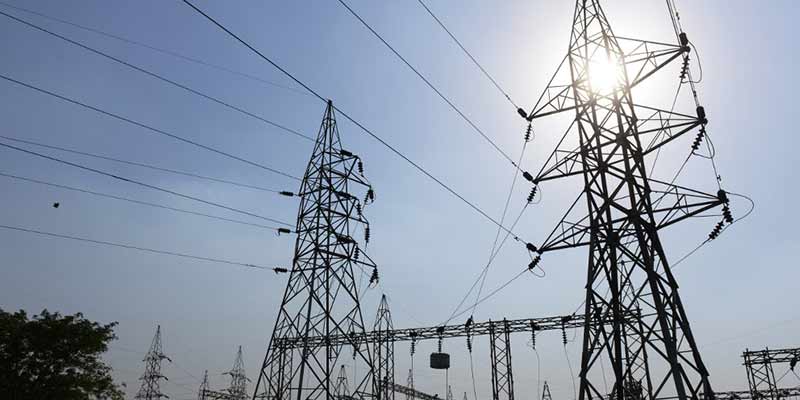- India
- Dec 20
State-owned discoms remain a huge burden to govt finances
• The Reserve Bank of India (RBI) released a report titled ‘State Finances: A Study of Budgets of 2024-25’. It provides a comprehensive assessment of the finances of state governments for 2024-25 against the backdrop of actual and revised/provisional accounts for 2022-23 and 2023-24, respectively.
• The report said the weak financial health of state-owned electricity distribution companies (discoms) constitutes a persisting challenge for state government finances.
• Discoms continue to remain a drag on state finances, with total accumulated losses at Rs 6.5 lakh crore by 2022-23 (2.4 per cent of GDP).
The key reasons for revenue losses include:
i) Delay in tariff orders.
ii) Poor billing and collection efficiencies.
iii) Non-implementation of Fuel and Power Purchase Cost Adjustment (FPPCA).
iv) Under-recovery of electricity dues of state government departments and the subsidy amounts.
• The outbreak of the global pandemic COVID-19 in the country and the consequent nationwide lockdown has exacerbated the liquidity problems for the power sector further as revenues of the power distribution companies nosedived as people were unable to pay for the electricity consumed while power supply, being an essential service, had been maintained.
• The weak financial health of state-owned electricity distribution companies constitutes a persisting challenge for state finances.
• Despite multiple financial restructuring efforts, total outstanding debt of discoms has grown at an average annual rate of 8.7 per cent since 2016-17, rising from Rs 4.2 lakh crore to Rs 6.8 lakh crore in 2022-23 (2.5 per cent of GDP).
• State governments provide considerable support to discoms through revenue subsidies, grants, and equity infusions, as well as by taking over annual losses.
• The recurrent need for bailouts of loss-making discoms diverts valuable resources that could otherwise be invested in developmental initiatives.
• For instance, the Ujwal Discom Assurance Yojana (UDAY) required state governments to absorb 75 per cent of the DISCOM debt — 50 per cent in 2015-16 and 25 per cent in 2016-17.
• The implementation of the UDAY scheme by 16 states led to a sharp rise in their fiscal deficits, outstanding debt, and interest payments in 2015-16 and 2016-17.
Reforms in power sector
• The 15th Finance Commission allowed an additional borrowing space of 0.5 per cent of Gross State Domestic Product (GSDP) for states which would take up power sector reforms to enhance operational and economic efficiency to promote a sustained increase in paid electricity consumption.
These reforms included reduction in:
i) Operational losses
ii) Revenue gap
iii) Payment of cash subsidy by adopting direct benefit transfer
iv) Tariff subsidy as a percentage of revenue.
• In 2021-22, as many as 12 states were permitted to borrow Rs 39,175 crore based on the stipulated reform criteria.
• In 2022-23, six states were allowed to borrow Rs 27,238 crore.
• In 2023-24, states were eligible to borrow approximately Rs 1,43,332 crore, as recommended by the Ministry of Power.
• The government of India has been implementing various performance linked and result oriented schemes with the objective to have a financially secure, viable and sustainable power sector (distribution segment in particular).
• Several interventions have been made to improve financial and operational efficiencies of discoms/ power departments by linking to reform measures.
This include:
• Additional borrowing space of 0.5 per cent of Gross State Domestic Product (GSDP) to states linked to power sector reforms undertaken.
• Introducing additional prudential norms for lending by Power Finance Corporation (PFC) Limited and REC Limited.
• Revamped Distribution Sector Scheme (RDSS).
What is Revamped Distribution Sector Scheme?
• The Revamped Distribution Sector Scheme (RDSS) was launched by the government of India in July 2021 with a total outlay of Rs 3,03,758 crore including Gross Budgetary Support (GBS) of Rs 97,631 crore.
• Improvement in financial sustainability and operational efficiency of the discoms/power departments is one of the key objectives of the RDSS.
• The scheme has a duration of five years (FY 2021-22 to FY 2025-26).
• The scheme envisages reducing the Aggregate Technical and Commercial (AT&C) losses to 12-15 per cent and Gap between Average Cost of Supply and Average Revenue Realised (ACS-ARR Gap) to zero at pan-India level by 2024-25.
• The scheme is designed to nudge the states/utilities to undertake necessary reforms for desired results.
• Based on performance of the utility against parameters mentioned under Result Evaluation Matrix of the RDSS, which include achievement against major financial & operational parameters, they are evaluated. Thus, assistance has been linked to performance.
• Projects worth Rs. 2.77 lakh crore have been sanctioned under RDSS for loss reduction and smart metering works
The way ahead
• Initiatives aimed at enhancing productivity, reducing transmission and distribution losses, rationalising tariffs in accordance with the underlying cost of power supply, unbundling the electricity supply industry, and privatising generation and distribution remain critical and would significantly improve the quality of state finances.
• States need to prioritise operational efficiency by minimising distribution losses, improving metering systems, ensuring timely tariff revisions, and incentivising the power sector to gradually reduce reliance on government subsidies.
Manorama Yearbook app is now available on Google Play Store and iOS App Store


